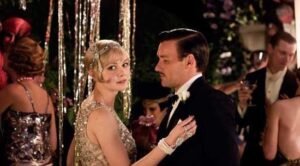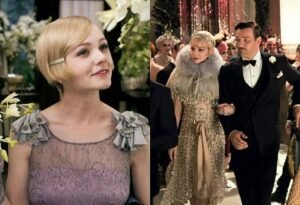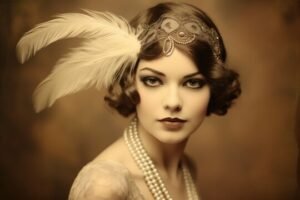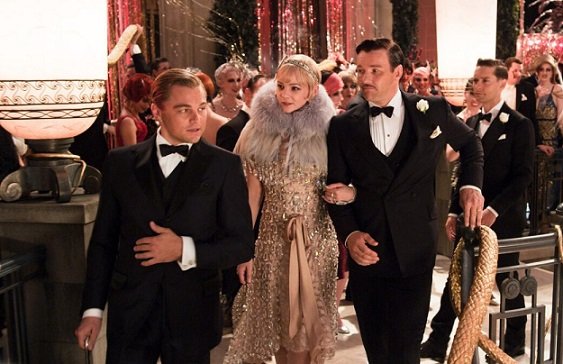The Real Fashion 1920s Flapper was an era marked by change, liberation, and bold expressions of individuality. Among the most iconic elements of the Roaring Twenties was the fashion of the flapper – young women who embraced a radical departure from the past, defying traditional social norms with their bold and adventurous style. The “flapper” was not just a fashion trend, but a symbol of women’s newfound freedom and independence.
In this article, we will take a detailed look at the real fashion of the 1920s flapper. We’ll explore the key elements that defined this iconic look, including clothing, hairstyles, makeup, and accessories, and how these fashion choices reflected the broader cultural shifts of the decade. Whether you’re fascinated by vintage fashion or simply curious about how the flapper girl influenced modern style, this guide will provide you with everything you need to know about one of the most revolutionary fashion movements in history.
Table of Contents:
- Introduction to 1920s Fashion
- The Birth of the Flapper Style
- Flapper Dresses and Silhouettes
- Hair and Makeup: Bold Statements of the 1920s
- Flapper Accessories
- Social and Cultural Impact of the Flapper
- Famous Flappers and Style Icons
- Flapper Fashion in Modern Times
- Important Milestones of the Flapper Era
- Conclusion
- Disclaimer
1. Introduction to 1920s Fashion

The 1920s was a decade of transformation, with many of the traditional norms being challenged, particularly in the realm of women’s fashion. The aftermath of World War I, combined with the rise of jazz music, urbanization, and changing gender roles, all contributed to the emergence of new fashion trends. The world had just come out of a restrictive Victorian era, and a new sense of freedom and expression took hold.
Women’s fashion in the 1920s reflected this dramatic shift. Gone were the constricting corsets and long, elaborate dresses of the previous century. Instead, women began embracing clothing that was more comfortable, practical, and allowed for movement. The flapper style emerged as the epitome of this change.
2. The Birth of the Flapper Style
Flappers were young women in the 1920s who rebelled against the older generation’s expectations. They were known for their carefree attitude, and their fashion choices reflected this sense of liberation. The term “flapper” was originally used to describe a young, carefree woman who wore fashion-forward, somewhat provocative clothing and who participated in the jazz and dance culture that defined the decade.
Flappers typically wore short, straight-cut dresses that emphasized freedom of movement. The iconic “bob” haircut, along with dark, smoky makeup, became synonymous with the flapper style. This bold new look made flappers stand out in both social and political spheres, as they represented women’s growing autonomy and their desire to embrace a modern, independent lifestyle.
3. Flapper Dresses and Silhouettes
The flapper dress is undoubtedly the most iconic piece of fashion from the 1920s. These dresses were often characterized by their loose, unstructured fit, which contrasted sharply with the corseted and tightly fitted dresses of earlier decades. The flapper dress was designed to hang from the shoulders, creating a straight and tubular silhouette that allowed women to move freely and comfortably.
The hemline of flapper dresses typically rose to just below the knee – a daring and revolutionary change from the long skirts that were once considered the height of modesty. The shorter hemline symbolized a sense of rebellion and newfound freedom for women.
Flapper dresses were made from lightweight fabrics such as silk, chiffon, and satin, often adorned with beads, sequins, fringe, and embroidery. This embellishment added glamour and drama to the dress, which was especially important for women who frequented jazz clubs and speakeasies during the Prohibition era. The loose fit of the dress, combined with its decorative elements, allowed women to dance and move with ease, which was crucial for the popular dances of the time, such as the Charleston.
4. Hair and Makeup: Bold Statements of the 1920s

The 1920s was the decade of change not only in fashion but also in beauty. The bobbed haircut became synonymous with the flapper look, marking a dramatic departure from the long, flowing hairstyles that women had worn in previous decades. The bob was a bold statement of independence and freedom, allowing women to break away from traditional gender expectations. It was short, sleek, and often styled with curls or waves to add texture and volume.
Makeup also became more daring during the 1920s. Flappers embraced bold and smoky eye makeup, with dark eyeliner and eye shadow becoming staples of the look. Lipstick was typically dark red or crimson, with a distinct cupid’s bow shape that gave the lips a more defined appearance. The emphasis on makeup during the 1920s was part of the larger cultural shift towards individual expression and personal style.
5. Flapper Accessories
Accessories were an essential part of the flapper look, often helping to complete the outfit and elevate it with a touch of glamour. One of the most iconic accessories of the 1920s was the headband. Flappers often wore wide, decorative headbands made from materials like velvet, satin, or beaded fabric.
Gloves, typically elbow-length and made from silk or satin, were also common. For evening events or nights out at jazz clubs, flappers often wore fur stoles or shawls to add an extra touch of sophistication to their look.
6. Flapper Fashion and Its Social and Cultural Impact
The rise of flapper fashion went hand in hand with the broader cultural shifts of the 1920s. Flappers were not just wearing a new style of clothing; they were making a statement about women’s rights, sexual liberation, and social freedom.
Flappers represented a break from the past, and their fashion was a direct challenge to the conservative values that had dominated the late 19th and early 20th centuries. The roaring 20s saw women gaining the right to vote in many countries, and the flapper style became a symbol of this newfound independence and empowerment.
7. Famous Flappers and Style Icons

While the flapper style was adopted by many young women during the 1920s, there were a few women who became the true icons of the era. Some of the most famous flappers of the time included:
- Clara Bow – Often referred to as the “It Girl,” Clara Bow was one of the most famous actresses of the 1920s. Her style, both on and off the screen, embodied the carefree, glamorous spirit of the flapper era.
- Zelda Fitzgerald – The wife of famous writer F. Scott Fitzgerald, Zelda was a key figure in the Jazz Age and a muse for many of her husband’s works.
- Josephine Baker – A dancer and singer, Josephine Baker was famous for her wild, exuberant performances and her role in popularizing the flapper style in Europe.
8. Flapper Fashion in Modern Times
Though the flapper style has long since faded from everyday fashion, it continues to inspire designers and influencers today. Modern fashion often takes cues from the 1920s, particularly when it comes to special occasion wear like evening gowns and cocktail dresses. The glamorous, beaded flapper dress is still a popular choice for vintage-themed events like Gatsby parties and New Year’s Eve celebrations.
9. Important Milestones of the Flapper Era
| Milestone Year | Event Description |
|---|---|
| 1920 | The introduction of shorter hemlines and bobbed hair for women. |
| 1922 | The release of F. Scott Fitzgerald’s The Great Gatsby, cementing the flapper as a cultural icon. |
| 1925 | Coco Chanel introduces the little black dress, a classic piece in modern fashion. |
| 1929 | The stock market crash signals the end of the Roaring Twenties, and the flapper era begins to fade. |
10. Conclusion
The real fashion of the 1920s flapper was not just about clothes; it was a manifestation of an era’s cultural transformation. The flapper girl, with her bobbed hair, daring makeup, and loose-fitting dresses, symbolized women’s growing independence and freedom. The flapper style remains an enduring symbol of the Roaring Twenties, and it continues to inspire fashion to this day.
11. Disclaimer
The information provided in this article is based on historical records and research available at the time of writing. Fashion trends and their impact may be interpreted differently by various cultural and social perspectives. The descriptions, references, and interpretations provided here are not exhaustive and may differ from other historical accounts.
